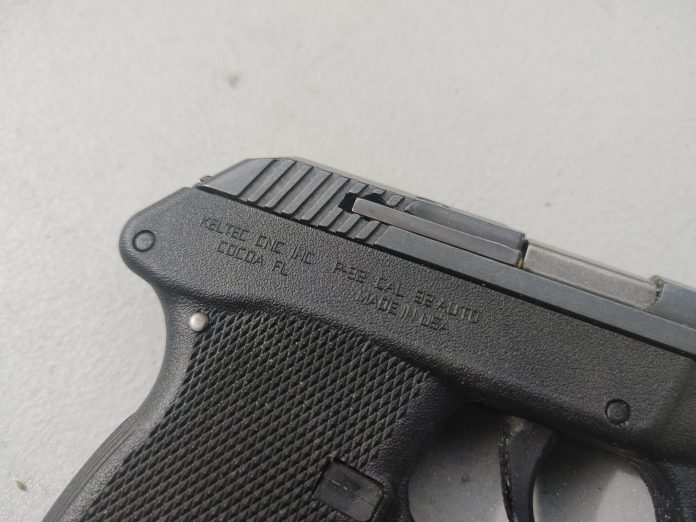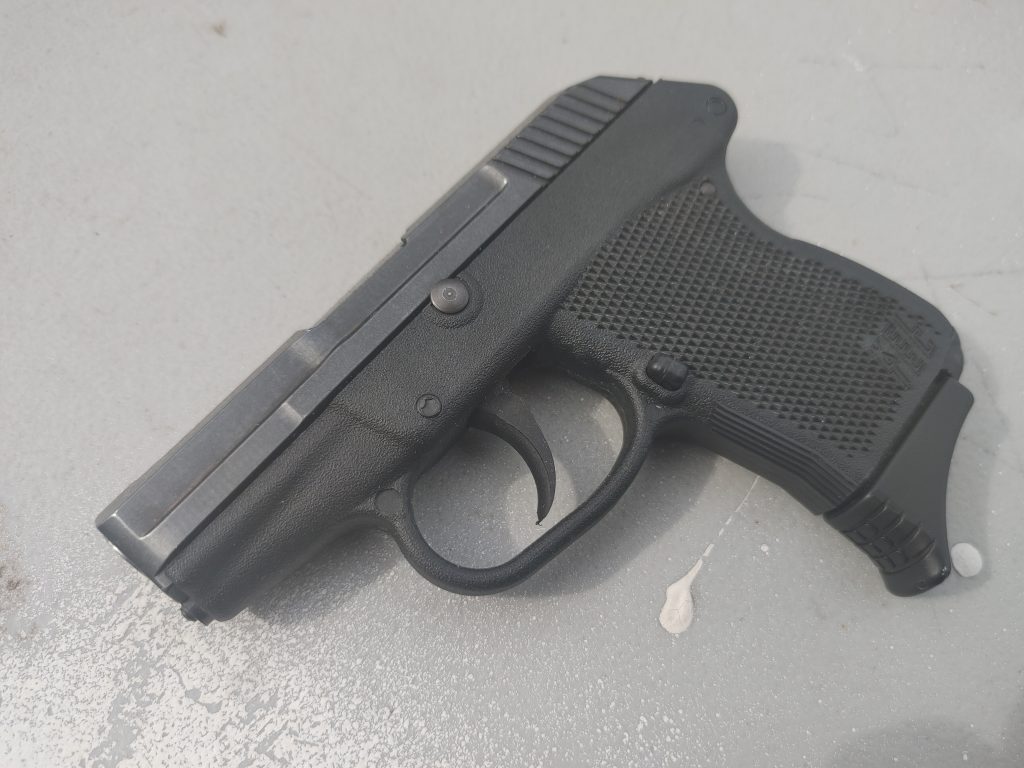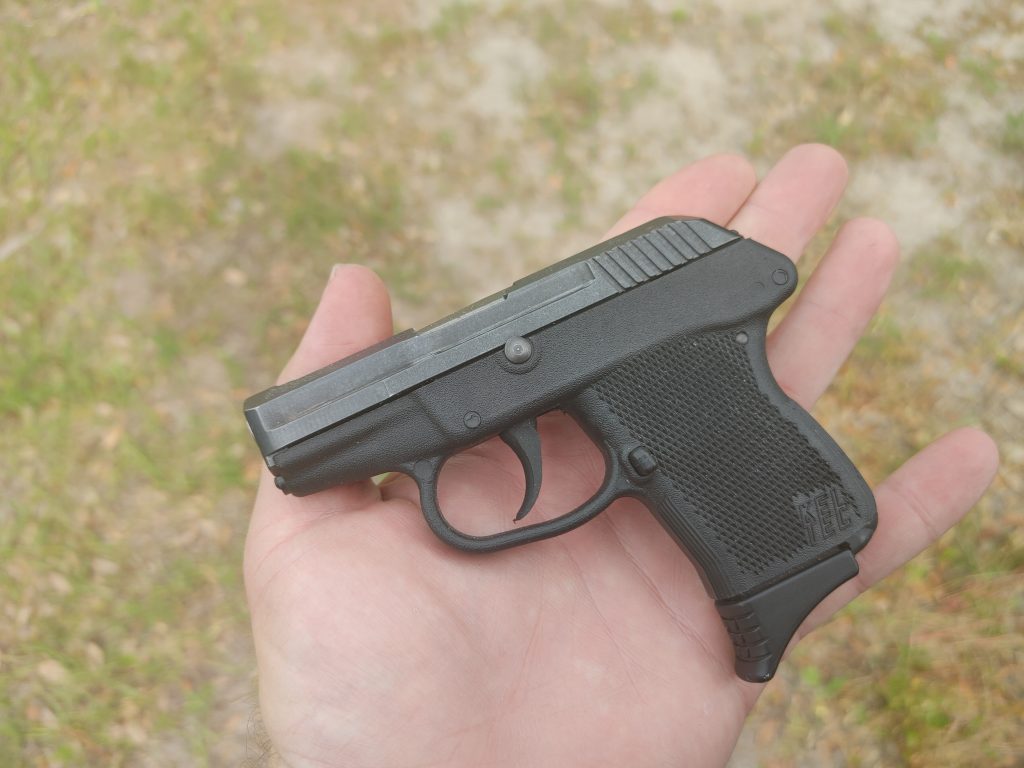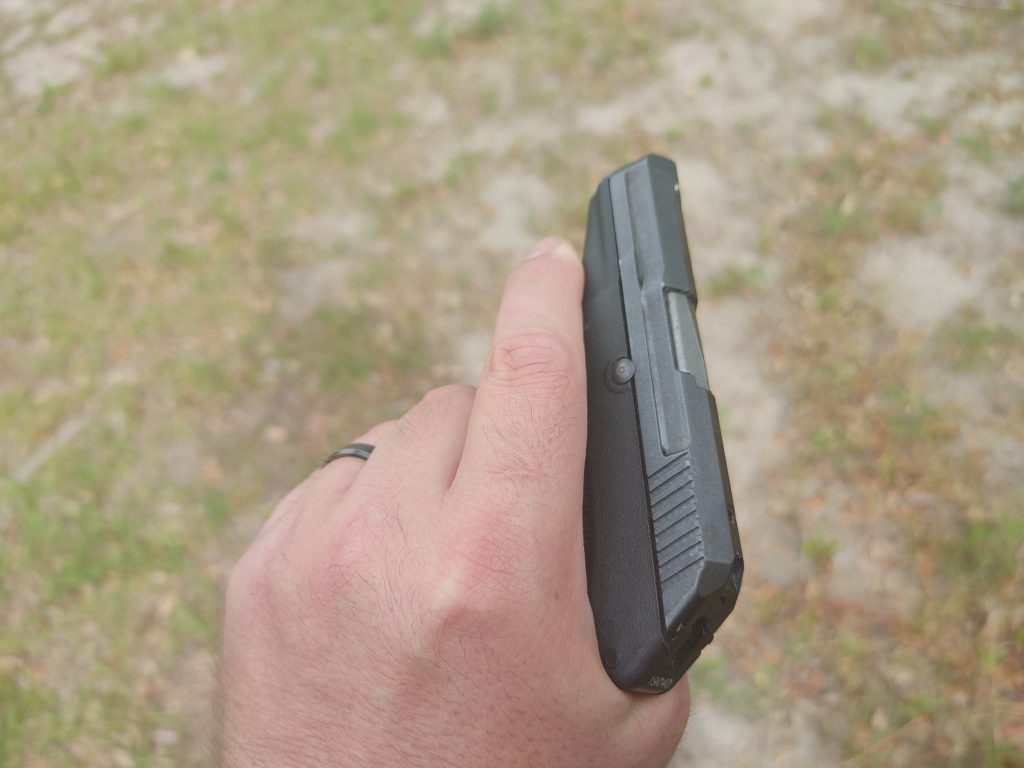
I’d argue the best centerfire pistol KelTec makes is the P32. It’s easily the most innovative, and honestly, it’s my favorite pocket pistol. I know many of you likely grit your teeth when you hear KelTec pistols, and they have had some quality assurance problems, but they have the p32 figured out. They’ve been producing the gun since 1999, and it served as the blueprint for the modern pocket pistol.
As I type, this one sits in my pocket in a Desantis holster. It’s my convenience carry gun. I typically carry a SIG P365XL, but on occasions when even that is too big, I carry the KelTec. It’s an older Gen 1 model, but it still runs like a typewriter. I regret never purchasing the extended baseplate for one extra round, but the past is the past.

Pocket pistols have been around since guns have existed. Weapons like the muff pistols of the Flintlock era are arguably pocket pistols. Colt made the M1903 Pocket Hammerless, and the Savage M1907 was advertised for concealed carry. While the concept has been around for decades, KelTec formed the first modern pocket pistol with the P32.
Why Made the P32 Different
Prior to the P32, guns like the Seecamp existed, as did the AMT Backup, which were arguably very small pocket guns. The AMT model had various reliability issues, and the Seecamp wasn’t for everyone. Both of these guns are all metal, and while the Seecamp is well-made, it’s expensive and often hard to find.
The P32 redefined pocket pistols in the same way that Glock redefined duty pistols. They used heavy doses of polymer. This had several benefits. First, the reduction in weight ensured the P32 weighed only 6.6 ounces. Polymer frames also reduced the price and made mass production easy.

The P32 used a smooth frame and slide to ensure easy carry. It fits right into a pocket without complaint. The little gun used a DAO trigger system and fed from a single stack magazine. As the name implies, it’s also a .32 ACP handgun. Pocket pistol aficionados know that is odd because modern pocket pistols use the .380 ACP. KelTec did make the cleverly named P3AT, but the P32 predates it. Surprisingly the gun used a locked breech and short recoil operation rather than direct blowback.
.32 ACP vs. .380 ACP
In 1999 both calibers were far from common. Neither was super popular at the time, and 32 ACP made as much sense as .380 ACP. From a pocket-sized pistol, the .32 ACP makes way more sense than the .380 ACP. It really is silly that we decided to make the .380 ACP our caliber of choice for pocket pistols.
This could be its own entire article. I’d sum it up by saying the reason we used .380 ACP over .32 ACP is the same reason people still cling to .45 ACP. It’s just slightly bigger, and in the American mind, bigger is better.

Pocket pistols makes more sense when using .32 ACP due to the substantially lower recoil, the extra magazine capacity, and the ease of shooting. It has about half the recoil energy of the .380.
Who KelTec Inspired
Look at any modern pocket pistol, and you can see KelTec’s influence. Ruger’s LCP, S&W Bodyguard.380 ACP, the Beretta PICO, and many more used KelTec’s influence as a guide. Hell, Glock seems to be the only one who made a proper .380 ACP that was a little bigger and broke the pocket pistol mold.
KelTec might be a lot of things, but they are certainly creative and innovative. From PCCs and Pocket Pistols to bullpup shotguns, they certainly make waves. The P32 might have been a little wave, but it’s one worth mentioning.



